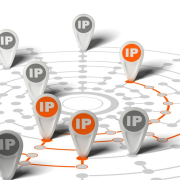The Essential Guide to IP Address Management for Remote Workers
In today’s world, ‘the office’ can mean your living room or a beachside café just as easily as it can mean a corporate cubicle. For many professionals and businesses, the reality of a remote workforce is no longer a forward-thinking dream, but an everyday working scenario. With this shift comes a new set of challenges, particularly in terms of network management and, more specifically, the management of IP addresses.
In this comprehensive guide, we’ll walk through the critical importance of IP address management (IPAM) in supporting remote workers, offering strategic insights tailored to IT professionals, remote employees, and small business owners. By the end, you’ll have a clear understanding of why IP address management is crucial for network efficiency, how to develop a robust IPAM strategy, and the tools that can help you execute and maintain a secure and seamless remote work environment.
How Things Have Changed For IT
The shift towards remote work was already gaining traction, but in the wake of the pandemic, it became a key area of discussion in the workplace. With global organizations and small businesses alike adopting a work-from-home model, IT infrastructure has been tested like never before.
Changing Demands on IPAM
The traditional office setup was relatively straightforward in terms of IP address management. A finite number of devices, predictable network traffic patterns, and a physical perimeter made IPAM more manageable. However, the transition to remote work has disrupted these norms, leading to complex network requirements that demand a more flexible, dynamic IPAM approach.
Increased Complexity Requiring Innovative Solutions
Remote work introduces a range of new devices to the company network, often with varying degrees of access requirements and security considerations. IoT devices, personal mobile phones, and home-networked appliances all add to the addressable IP inventory. Managing this expanding array of addresses while keeping the network secure is no small feat.
The Role of Cloud-based Solutions
Traditional IPAM tools, once hosted locally, are becoming cloud-based. Cloud solutions offer the scalability and accessibility needed for a distributed workforce, where remote support and data backup are critical. However, they also come with their own set of challenges, including potential latency issues and the need for robust security protocols.
The Foundation of IP Address Management
IP address management is the foundation of a well-organized network, ensuring that all devices are correctly configured and accessible. But what exactly does IPAM involve?
What is IP Address Management?
At its core, IPAM is the administration of DNS and DHCP, essential network services that provide IP addresses and hostnames to devices on a network. Effective IPAM automates IP assignment, tracks usage, and troubleshoots connectivity issues, maintaining network integrity.
Core Components of IPAM
- Address Management: Allocating and reclaiming IP addresses to maintain a balance and prevent shortages.
- DNS Management: Mapping IP addresses to domain names and ensuring effective name resolution.
- DHCP Management: Automating the assignment of IP addresses, gateway details, and DNS server parameters, helping devices connect to the network seamlessly.
- Integrated Tools and Processes: Employing systems to automate the provisioning, management, and tracking of IP resources alongside strict network policies.
Remote Work’s Impact on IP Address Assignment
With employees working from varied locations and using an assortment of devices, IP address assignment must evolve to accommodate these changes. The first thing to look at when considering how to manage your IP Addresses is decide if you want a dynamic or static IP assignment:
- Dynamic: Offering temporary IP assignments that can change based on network availability and device movement.
- Static: Providing a permanent IP address, useful for devices that require consistent connectivity in or out of the office, such as fixed workstations or servers.
In the era of remote work, striking the right balance between accommodating user needs and maintaining network control is critical. Automating IP address assignment based on device type or user profile can help achieve this harmony.
Best Practices for Remote IP Address Allocation
- Implementing DHCP relay agents for remote subnets
- Setting up VPN connections with DHCP capabilities
- Deploying IP address pools with adequate scope for remote work expansion
The Importance of Centralized IP Address Administration
Centralizing IP address administration via IPAM tools is key to maintaining control and visibility, especially for distributed remote environments. A single source for IP address allocation prevents IP conflicts, enhances DNS management, and fosters better troubleshooting by consolidating data within one system.
Maintaining Compliance and Security
Tracking IP addresses to specific users or departments aids in auditing network usage for compliance with security policies. By integrating with network access control (NAC) solutions, centralized IPAM can restrict access to sensitive resources, ensuring only authorized devices connect to the corporate network even if your team is remote.
Reducing Operational Burdens
Manual IP address management is labor-intensive and prone to errors. To ensure fewer errors and a smoother day-to-day management of IP addresses, you can use a centralized IPAM systems automate many of these tasks, reducing administrative overhead and streamlining operational processes.
Thriving in a Mobile First and BYOD Environment
Mobility and the Bring Your Own Device (BYOD) movement have further transformed the IP address management landscape.
Device Proliferation and IPAM Challenges
The multitude of devices, their transient nature, and the need for flexible mobility solutions create IPAM challenges, such as IP fragmentation, rogue devices, and access control complications.
Securing Personal Devices on the Company Network
Personal devices accessing the corporate network can pose security risks. Strategies like network segmentation and the use of a virtual desktop infrastructure (VDI) can mitigate these risks while maintaining IP control.
Achieving Seamless Device Integration
Leveraging self-registration portals to onboard devices securely can help mitigate the risk that comes with allowing employees to use their own devices. You can also look into implementing MDM solutions to manage and secure mobile devices’ IP addresses, settings, and software
IPAM Security Best Practices
Securing IPAM is as critical as its deployment. A breach in your IP address database can compromise the entire network.
Securing the IPAM Infrastructure
Employing role-based access controls (RBAC) ensures that only authorized personnel can modify IP address configurations. By using secure protocols for IP address assignments, you won’t have to worry about the risks that come with your employees using VPNs, public hotspots, and untrusted networks.
Monitoring and Auditing for Anomalies
Regularly reviewing IPAM logs and performing network scans to detect unauthorized devices or changes in the IP address schema helps catch potential security lapses early.
Implementing Redundancy and Disaster Recovery
Creating backup systems and ensuring failover capabilities are in place protects against IPAM service outages, critical for remote workers who depend on continuous network access.
Using Automation and AI for Enhanced IP Address Management
Automation and artificial intelligence are becoming integral to IPAM as networks grow more complex. Here are a few ways they can make a real impact in your workplace:
The Advantages of IP Address Management Automation
Automating IP provisioning can speed up device onboarding, particularly for large and dynamic workforces. Additionally, you can use AI programs that can predict and prevent network issues, such as IP exhaustion, by analyzing usage patterns and making proactive adjustments.
Real-time Monitoring and Adjustment
Tools that provide real-time visibility into IP address usage and can adjust subnet configurations on the fly are invaluable for network health, particularly when supporting transient remote connections.
The Future of AI in IPAM
Predictive IP allocation, self-healing networks, and AI-driven security enhancements are on the horizon, promising even greater network stability and uptime.
Selecting the Right IPAM Tools for Your Remote Setup
Choosing the right IPAM tool suite is crucial for successful remote worker support. But how do you pick from the plethora of options available?
IPAM Solution Considerations
- Scalability to manage a growing IP inventory
- Integration with existing network infrastructure and tools
- User-friendliness for remote support staff
- Comprehensive feature set covering DHCP, DNS, and IP address inventory management
Leading IPAM Solutions
- Infoblox IPAM
- SolarWinds IP Address Manager
- BlueCat IPAM
- GestióIP
- Men & Mice
Maintaining an Effective Remote Work IPAM Strategy
An effective IPAM strategy is not static. It requires regular review and adaptation to support the evolving needs of remote work.
Regular Audits and Updates
Conducting IP address space audits periodically ensures that IP address usage remains optimized and that obsolete or underutilized addresses can be reclaimed for re-allocation, supporting expanded remote operations.
Training and Education
Investing in ongoing IT education ensures that remote support teams are equipped with the knowledge and skills needed to manage IP addresses efficiently and securely.
Implementing Policies and Governance
Establishing clear policies for IP address usage and governance structures ensures that IPAM practices align with business objectives and regulatory requirements.
Addressing Common IPAM Challenges in the Age of Remote Work
Remote work brings its own set of IPAM challenges, from IP address tracking to maintaining security protocols across diverse networks.
Common Remote Work IPAM Challenges and Solutions
- Dynamic Address Assignment: Implementing lease times and address pools with long-term planning can help manage dynamic IP addresses.
- Device Ownership Ambiguity: Adopting clear policies for personal and company-issued devices can prevent IP conflicts and improve network security.
- Shadow IT: Monitoring for unauthorized devices and incorporating them into the IPAM system can prevent potential security breaches.
IPAM as the Backbone of Remote Work Success
IP address management is more than just a technical necessity—it’s the bedrock of a successful remote work strategy. As organizations continue to adapt to a remote-first world, a robust IPAM strategy ensures that networks remain secure, efficient, and accessible.
For IT professionals, remote workers, and small business owners, the message is clear: IP address management is a critical piece of the remote work puzzle, and investing in its development and execution will pay dividends in productivity, efficiency, and peace of mind.
With this knowledge in hand, you are now poised to take the next steps in optimizing your IPAM strategy and supporting your remote workforce. Whether you are just starting or looking to enhance your existing IPAM practices, the effort you put into your IPAM strategy will have a big impact on your employees and business.






